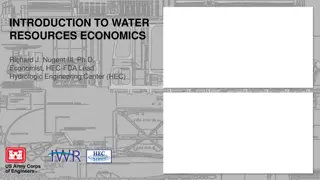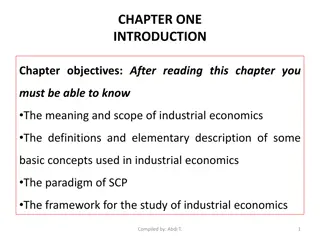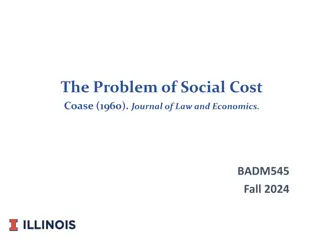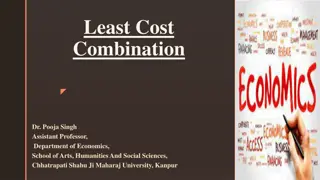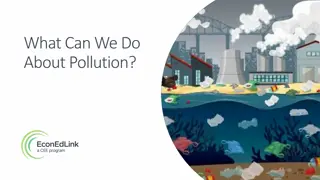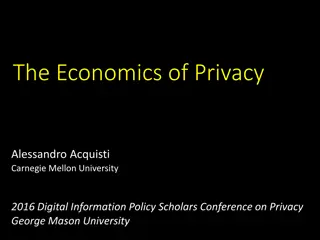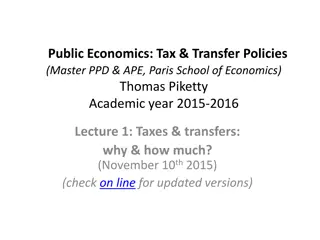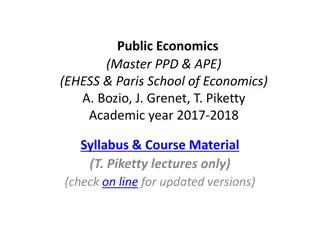Externalities in Economics
Concept of externalities in economics, focusing on market efficiency, public intervention, negative and positive externalities, and their effects. Learn about examples and solutions to mitigate externalities in different markets.
Download Presentation

Please find below an Image/Link to download the presentation.
The content on the website is provided AS IS for your information and personal use only. It may not be sold, licensed, or shared on other websites without obtaining consent from the author.If you encounter any issues during the download, it is possible that the publisher has removed the file from their server.
You are allowed to download the files provided on this website for personal or commercial use, subject to the condition that they are used lawfully. All files are the property of their respective owners.
The content on the website is provided AS IS for your information and personal use only. It may not be sold, licensed, or shared on other websites without obtaining consent from the author.
E N D
Presentation Transcript
Chapter 10: Externalities Laura Jackson Young
Market Efficiency Markets are usually a good way to organize economic activity In absence of market failures, the competitive market outcome is efficient Maximizes total surplus Public Intervention Public Intervention: How can the government intervene to alleviate externalities?
Externalities and Efficiency Externality Externality: The uncompensated impact of one person s actions on the well-being of a bystander One type of market failure External cost = Negative External cost = Negativeexternality bystander External benefit = Positive External benefit = Positiveexternality bystander externality: Hurts the externality: Benefits the
Negative Externalities What are some examples of scenarios in which a transaction may harm the bystander?
Market for gasoline P $ 5 4 S 3 $2.50 2 D 1 0 25 Q 0 10 20 30 (gallons)
Effects of Negative Externalities P 5 $ Social cost Social cost = private + $1 external cost 4 Supply (private cost) 3 External cost 2 D 1 0 0 10 20 30 (gallons) Q Overproduction of Gasoline
Negative Externalities: Use Taxes! P 5 $ private + $1 tax 4 Supply (private cost) 3 Impose tax = external cost 2 D 1 0 0 10 30 (gallons) Q 20 Internalize Externality ProduceQtax =20
Positive Externalities What are some examples of scenarios in which a transaction may benefit the bystander?
Market for Electric Vehicles P P $50,000 40,000 S 30,000 20,000 10,000 D 0 Q Q (in thousands) (in thousands) 0 10 20 30
Effects of Positive Externalities P P $50,000 External benefit 40,000 S 30,000 Social value Social value = private benefit + $10,000 external benefit 20,000 10,000 D 0 Q Q (in thousands) (in thousands) 0 10 20 30 25 Underconsumption of EVs
Positive Externalities: Use Subsidies! P P $50,000 Impose subsidy = external benefit 40,000 S 30,000 private + $10,000 subsidy 20,000 10,000 D (private benefit) 0 Q Q (in thousands) (in thousands) 25 0 10 20 30 Internalize Externality ProduceQsubsidy =25
Global Pandemics Create Negative Externalities Marginal social cost of contracting illness Market for Leisure Trips The marginal external cost associated with risky behavior during a pandemic are larger the more infectious and fatal the disease because you are likely to make more people sick The infectiousness of a disease is estimated by R or its reproduction rate A higher R means, on average, someone with the disease infects more people Marginal external cost of infecting others Price Marginal private cost of contracting illness What solutions can be used to What solutions can be used to internalize this negative internalize this negative externality? externality? Demand Quantity Overproduction of leisure travel
Efforts to Combat Global Pandemics Create Positive Externalities Market for Masks Similarly, the marginal external benefit associated with social distancing and mask-wearing during a pandemic are larger the more potential infections and fatalities averted since your actions can save more lives What solutions can be used What solutions can be used to internalize this positive to internalize this positive externality? externality? Price Suppl y Marginal social benefit of masks Marginal external benefit of preventing spread Marginal private benefit of mask wearing Quantity Underproduction of masks
Other Methods to Fix Externalities Industrial policy patents can encourage investment Moral codes cultural norms can incentive behaviors Charities if private parties won t spend what s necessary Private Markets Coase Theorem
Coase Theorem If private parties can bargain without cost over the allocation of resources Can solve the problem of externalities on their own Necessary Assumptions: 1. 1. Property rights Property rights must be defined in some way 2. 2. Bargaining Bargaining must be costless 3. The decision makers in the bargaining must be economically rational economically rational
Example: Health impact of pollution Consider a community where parents may have to pay higher health- care costs related to pollution-induced asthma among their children because of increased industrial activity in their neighborhood Producers do not consider those costs to others in their decisions They produce more goods with negative externalities than is efficient Leads to more environmental degradation than is socially desirable Using the Coase theorem, is there a way that the firms generating the pollution and the parents could negotiate a solution to the externalities without government intervention?
The Wicked Problem of Water Quality in the Mississippi River Watershed Unfortunately, the Coase theorem s fundamental assumption of costless negotiation often falls short not commonly applicable as a real-world solution Coase theorem is an important reminder that, even in the case of complex environmental problems, there may be room for mutually beneficial compromises As we work through this application, keep in mind the assumptions behind the private market outcome via the Coase Theorem and potential government intervention


